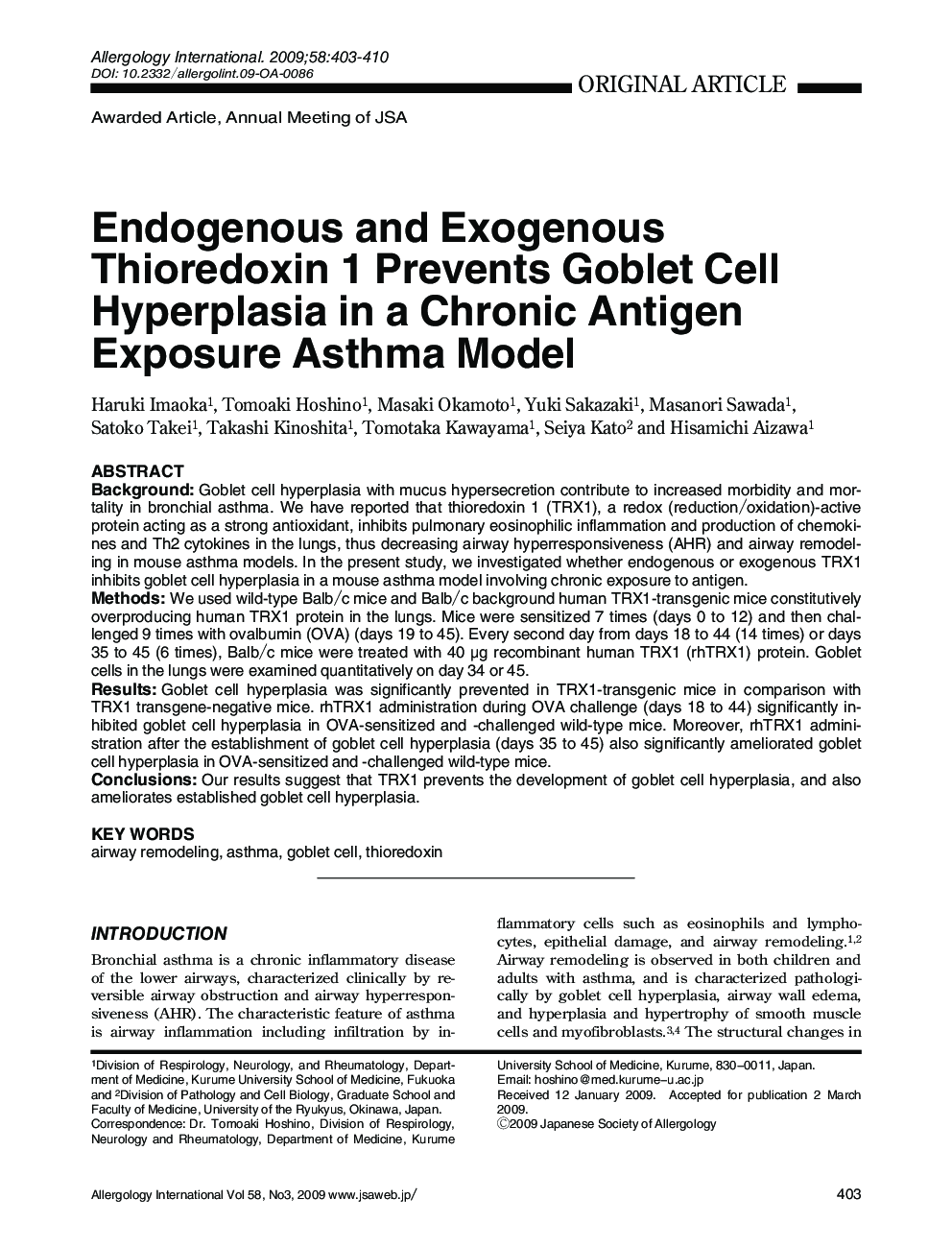| Article ID | Journal | Published Year | Pages | File Type |
|---|---|---|---|---|
| 3341029 | Allergology International | 2009 | 8 Pages |
ABSTRACTBackgroundGoblet cell hyperplasia with mucus hypersecretion contribute to increased morbidity and mortality in bronchial asthma. We have reported that thioredoxin 1 (TRX1), a redox (reduction/oxidation)-active protein acting as a strong antioxidant, inhibits pulmonary eosinophilic inflammation and production of chemoki- nes and Th2 cytokines in the lungs, thus decreasing airway hyperresponsiveness (AHR) and airway remodeling in mouse asthma models. In the present study, we investigated whether endogenous or exogenous TRX1 inhibits goblet cell hyperplasia in a mouse asthma model involving chronic exposure to antigen.MethodsWe used wild-type Balb/c mice and Balb/c background human TRX1-transgenic mice constitutively overproducing human TRX1 protein in the lungs. Mice were sensitized 7 times (days 0 to 12) and then challenged 9 times with ovalbumin (OVA) (days 19 to 45). Every second day from days 18 to 44 (14 times) or days 35 to 45 (6 times), Balb/c mice were treated with 40 μg recombinant human TRX1 (rhTRX1) protein. Goblet cells in the lungs were examined quantitatively on day 34 or 45.ResultsGoblet cell hyperplasia was significantly prevented in TRX1-transgenic mice in comparison with TRX1 transgene-negative mice. rhTRX1 administration during OVA challenge (days 18 to 44) significantly inhibited goblet cell hyperplasia in OVA-sensitized and -challenged wild-type mice. Moreover, rhTRX1 administration after the establishment of goblet cell hyperplasia (days 35 to 45) also significantly ameliorated goblet cell hyperplasia in OVA-sensitized and -challenged wild-type mice.ConclusionsOur results suggest that TRX1 prevents the development of goblet cell hyperplasia, and also ameliorates established goblet cell hyperplasia.
